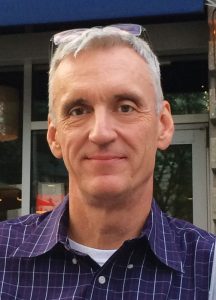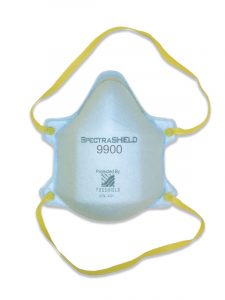
Sciessent’s CEO Paul Ford discusses antimicrobial and antiviral solutions for textiles.
TW Special Report
Beverly, Mass.-based Sciessent LLC recently announced that in support of the fight against the Covid-19 pandemic, it is working with a consortium of manufacturers to produce 700 million face masks incorporated with Sciessent’s Agion® antimicrobial solution. Sciessent reports: “The Agion treatment incorporated into masks is modeled after the FDA- [U.S. Food and Drug Administration], E.U.- and Canadian-cleared Nexera Medical surgical respirator, which relies on Agion Antimicrobial performance to make FDA-cleared claims to inactivate viruses by 99.99 percent in 5 minutes and kill 99.99 percent of bacteria in one hour.”
Sciessent was founded in 2011 by Agion Technologies Inc.’s senior management team. The company then “… acquired Agion’s intellectual property assets, including the company’s portfolio of national and international patents and patent-pending applications, as well as its proprietary expertise pertaining to anti-odor agents including Agion metal ions-based antimicrobial technology and Agion Active™ dual-action anti-odor technology.”
Sciessent then took over Agion Technologies’ role in “providing sustainable technologies that benefit and enhance people’s lives through medical devices, potable water
and textile applications,” according to the company. It has pledged to remain innovative and to expand applications for its existing solutions and integration with complementary
technologies.
Recently, Sciessent’s CEO, Paul Ford, spoke with Textile World editors about the science behind its antimicrobial solutions, how they work and their effectiveness and role during
the COVID-19 pandemic.
TW: These must be the most interesting of times for the Sciessent team! How are people holding up?
Paul Ford: Folks believe they are contributing to the greater good and feel proud to be delivering a technology that truly performs. While the office staff is all working remotely, our technical team has been working in the labs daily and on weekends to support customers. The regulatory, engineering and healthcare group has worked literally through the night as needed to deliver critical information to the FDA almost immediately.
TW: Sciessent produces a variety of technologies. Can you describe the range and some of the leading applications for the technologies?
Ford: Eight years ago, Sciessent looked at apparel strategically, and determined the market demanded more than antimicrobials. Our technical team innovated and became one of the first suppliers to introduce non-biocidal odor adsorption product that could perform independently or in concert with our Agion Antimicrobial product line. We have since expanded to textile water repellents and other auxiliaries. These textile products are now the larger portion of our business, bigger than the Agion Antimicrobial solutions sold to the medical device, drinking water and footwear segments.

9500 N95 Respirator masks feature Agion® antimicrobial and FOSSHIELD® fiber.
TW: Although Sciessent’s Agion is described as an antimicrobial, it also confers antiviral properties, correct?
Ford: In medical device applications, the FDA reviews the end product directions for use and where supported with robust studies, authorizes antiviral claims. The Nexera Surgical Respirator with Sciessent’s antimicrobial technology has demonstrated 5 minute deactivation of numerous viruses and makes such claims.
TW: In layman’s terms, how does Agion technology work?
Ford: Agion is a mixture of metal ions, including silver, copper and zinc, which in the presence of moisture are delivered at a controlled rate from a zeolite — similar to a sand grain. Zinc modulates the flow of silver and copper, which are doing the heavy lifting
in terms of delivery the antimicrobial performance.
TW: What does “controlled delivery” mean, and why is it important?
Ford: Controlled delivery refers to how the silver and copper ions are released from the zeolite carrier. Other silver antimicrobials just dissolve based on the solubility of the material, which can be too low for efficacy or too high, resulting in shortened use life. The silver in Agion is delivered through an ion exchange process — the silver leaving the zeolite only when another ion, such as sodium, changes place with it on the zeolite. So much like a thermostat controls the temperature, when the silver reaches an antimicrobial concentration the zeolite turns off. If the silver is washed or wiped off, the zeolite turns back on, bringing the silver concentration back up to an antimicrobial level. This metered delivery is why the Agion antimicrobial is known for its longevity and efficient use of active ingredients.
TW: Generically, how are antimicrobial treatments/ finishes tested, rated and what are acceptable results for agencies like the FDA?
Ford: Antimicrobial testing is typically based on standard test methods, for example ISO, ASTM International or American Association of Textile Chemists and Colorists methods. Oftentimes modifications are made to the method to include simulated use of the finished product, to evaluate performance over time and to test against clinically relevant organisms. The antimicrobial claims for the finished product are based on the results of the testing. Performance greater than or equal to 99.9 percent reduction is often specified by the end use customer for FDA-regulated products.
TW: To make antiviral claims, what is permitted and what agencies are involved?
Ford: The EPA does not allow antiviral claims unless the product is registered to make health claims. FDA will review virus claims as part of a device filing. I expect the EPA will have a busy enforcement calendar pursuing companies that have marketed unvalidated antiviral solutions here in the United States after this pandemic winds down.
TW: When used in textile applications, how durable is Agion?
Ford: We can tune the finish to provide performance from 10 home washes up to 100 industrial washes
TW: What do you see in the future for antimicrobial technologies and applications?
Ford: As the market for antimicrobials has become more competitive, we have seen a bit of a shift. Our brand has been built off true performance and durability, backed by test data.
As other technologies move into the market to fill the heightened demand led by the current crisis, in some cases they are rushed to market and so can’t be differentiated with improved performance. In these instances, the suppliers build their brand on marketing their technology differently.
As the crisis continues, I think the consumer will be much more aware of technologies like antimicrobials. Because of this, brands will need to offer a technology that delivers actual performance, not just a marketing claim that is not substantiated with test data. The goal for us as suppliers should always be to deliver the best performing technologies to the consumer. This has always been Sciessent’s approach, one that I know has been appreciated by our customers and by extension, their end users.
May/June 2020




